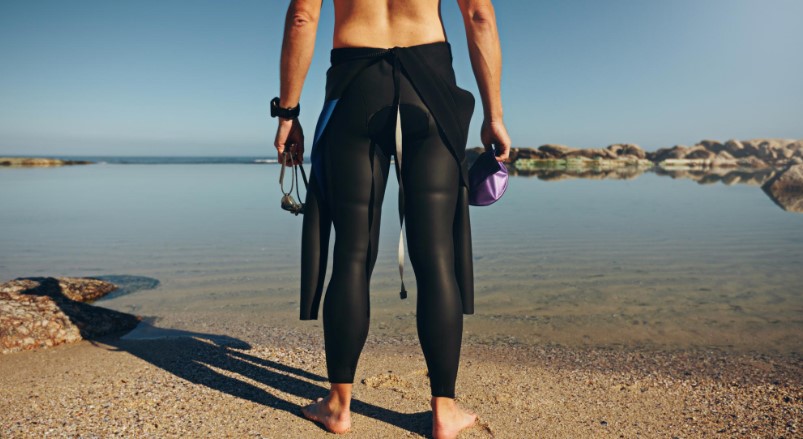
Wetsuits are an essential wear for surfers, swimmers, and water hobbyists. Designed to allow the user to spend long periods of time in the water doing activities like surfing, and at the same time keep warm and comfortable in the water, especially whilst doing activities.
Wetsuits come in many forms and designs. So, it’s an essential to choose the right wetsuit for your needs and for the time of year you are looking to spend time in the water.
Thickness
One of the most important aspects to consider when purchasing a wetsuit is wetsuit thickness. The thickness of the wetsuit neoprene affects temperature and comfort. Wetsuit thickness is measured in millimeters and indicated with a mix between numbers.
The first number represents the thickness of the neoprene (torso area), and the second number represents the thickness of the neoprene in other areas of the body, such as the arms and legs. Generally, wetsuit sizing comes in two numbers – for example: 3/2 or 5/4 are common sizing’s you will see when looking for wetsuits.
Usually, the torso area of a wetsuit is made with thicker neoprene to keep your core warm enough the remaining parts of the wetsuit – the arms and legs are manufactured with thinner neoprene, as this allows for movement.
Seam seals
The type of seam seal of the wetsuit is crucial. There are three popular seam seals that you can find on the market, flatlock wetsuit stitching, sealed wetsuit seams, and sealed and taped wetsuit seams.
Flatlock wetsuit stitching is recommended for use in water above 62°. These are good for surfing because the wetsuit lies flat against your body, causing no discomfort. But keep in mind that some water may get inside the wetsuit. Sealed wetsuit seams are glued and blind stitched, this type of seam is recommended for use in the water around 55° and higher. The seams are blind stitched and glued, but the blind stitching does not cover the entire neoprene, making it watertight. Little water may still get in.
Last is the sealed and taped wetsuit seams (blind stitched, glued, and 100% taped). This kind of wetsuit is ideal for use in the water around 55° and below. The stitch is first glued and then blind stitched but still has interior seam taping. The interior taping is perfect for increasing the durability, reinforcing the seam, and preventing any water from coming in.
Types and lengths
The type and length of a wetsuit affect its function. Therefore, you should choose a wetsuit with best length based on which season and climate you are looking to use it in. Popular types and lengths that you can find are full wetsuits, shorties, long john, wetsuit tops, and wetsuit bottoms.
Full suits cover your entire body, including your arms and legs up to ankles and wrists. These wetsuits are also available in various thickness levels for different water temperatures. Shorties are usually thinner and are perfect for warmer water temperatures. Long johns are like full suits, but they don’t cover the arms. Again, ideal for warmer waters. Wetsuit tops and bottoms are like the names suggest.
Zippers
We have previously mentioned the thickness and functions of the wetsuits, but you have to get in and out of the wetsuit, so the zipper is very important. Let’s talk about zippers here.
There are three types of zippers, back zip, chest zip, and zipper-less. Back zip wetsuits are the classic design and can be found in many places. The zipper goes down the length of the spine and has a long cord attached to it so you can zip yourself in and out easily. Chest zip wetsuits have a zipper through the chest and neck. And zipper-less wetsuits are great for mobility while surfing or paddling. This type of wetsuit has an entry point around the neck or chest area.
Choosing the best wetsuit for your needs and your budget is usually a focus for people wanting to purchase a wetsuit. By selecting the correct type of wetsuit, you can make sure it will serve you well for many years, whether you are surfing in warm or colder waters.
